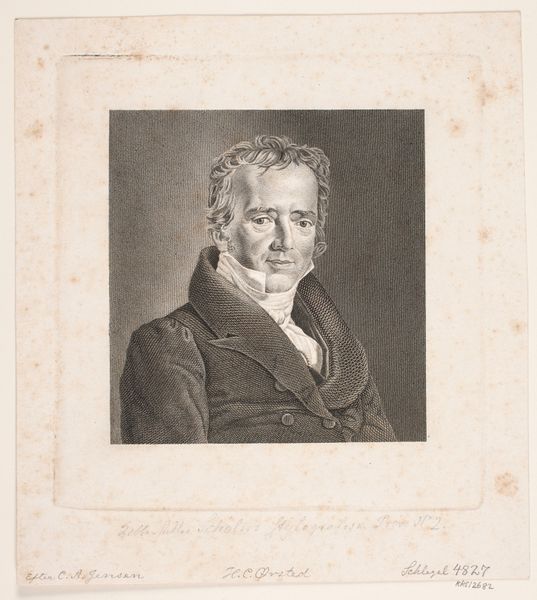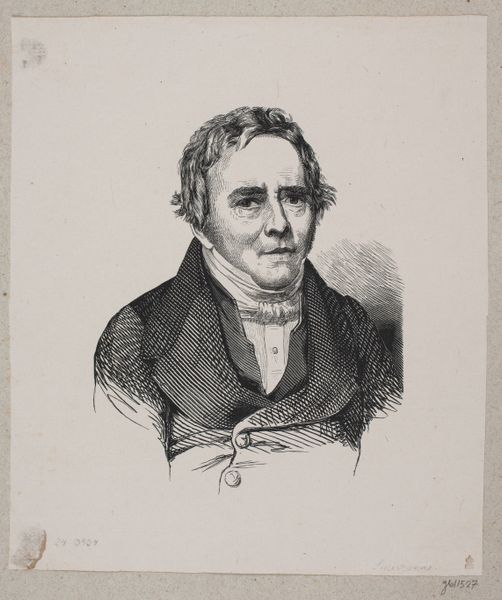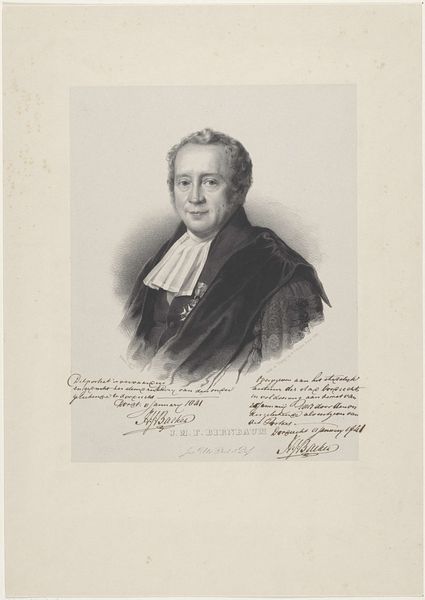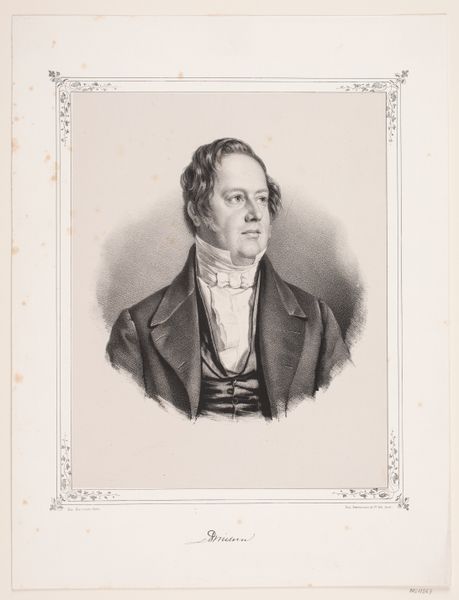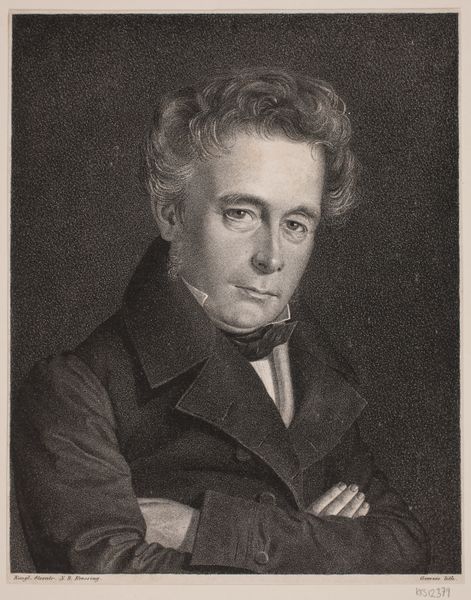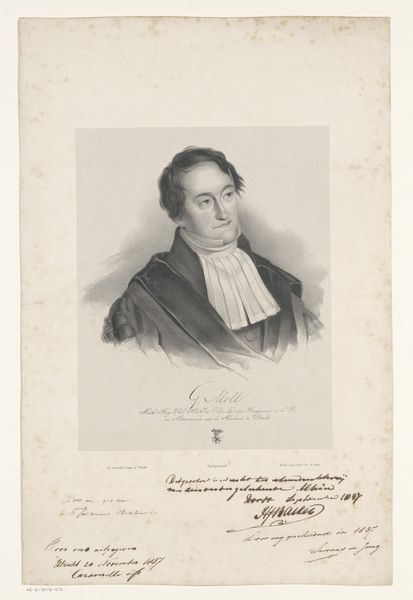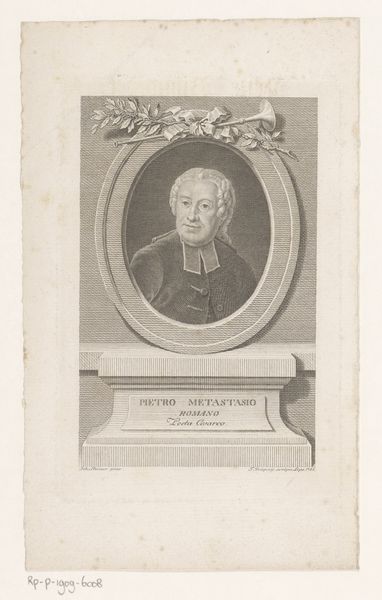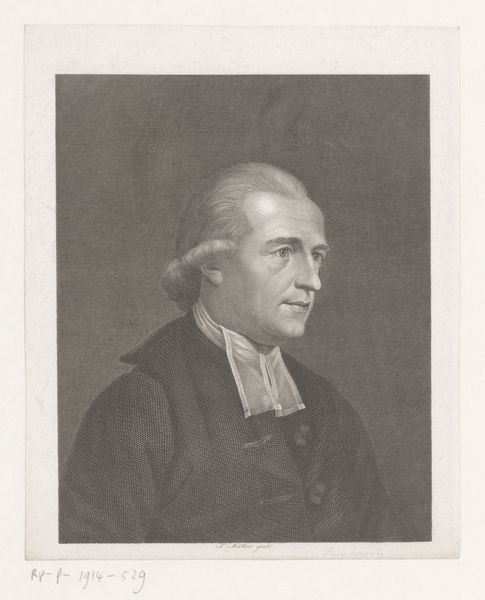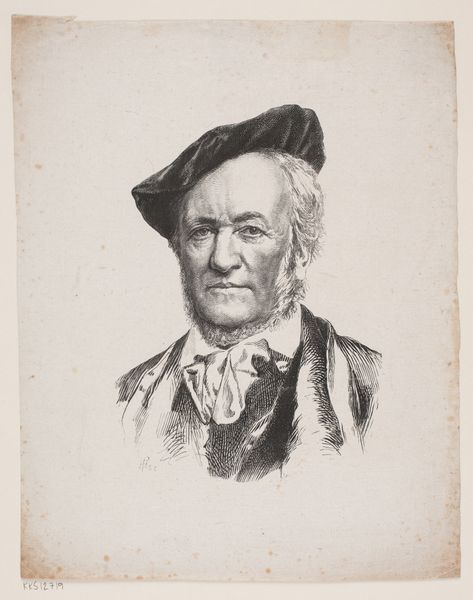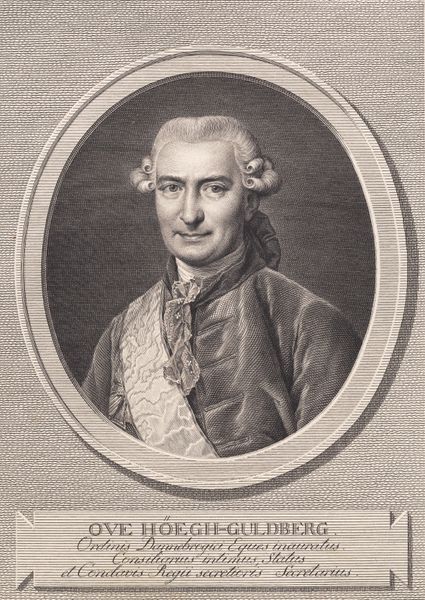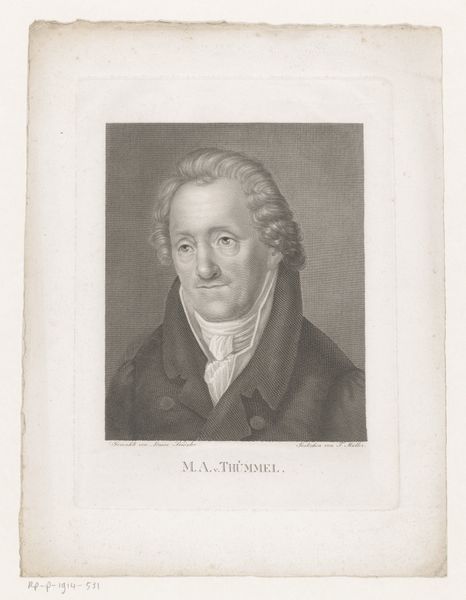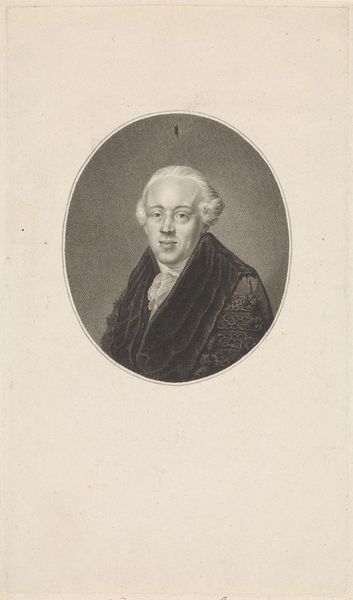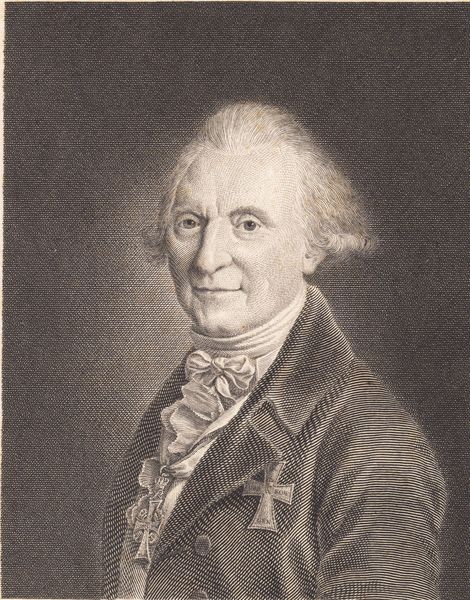
drawing, lithograph, print
#
portrait
#
drawing
#
neoclacissism
#
lithograph
# print
#
19th century
#
portrait drawing
#
history-painting
#
academic-art
#
portrait art
Dimensions: 371 mm (height) x 281 mm (width) (bladmaal)
Curator: Here we have a lithograph from 1821 titled "Carl Leonhard Reinhold," currently held in the collection of the SMK, Statens Museum for Kunst. It is believed to be made by Peter Copmann. Editor: It's a rather solemn image. The lithographic texture lends it a certain weight, wouldn't you say? Almost like it’s carved in stone rather than sketched. The eyes, in particular, convey such seriousness. Curator: Lithography as a printmaking process became quite popular in the early 19th century, allowing for the relatively inexpensive production of images for a wider audience. This portrait would have served to disseminate Reinhold’s image and, by extension, his philosophical ideas within academic circles and beyond. Editor: Absolutely, we must not forget the material implications of making many copies quickly. Do you believe this piece helped contribute to constructing an image of authority? Think about his coat, the decoration hanging down. Even the stiff bow ties signal something. Curator: The subject, Carl Leonhard Reinhold, was a prominent philosopher who contributed significantly to the development of German Idealism, wouldn’t you agree? His association with figures like Kant made him a notable figure of his era. The lithograph’s academic art style would clearly signal the education of the patron to those who may be able to afford or study such things. Editor: And what about the very nature of portraiture at this time? A print would create access for the academic elite to participate in what one might call a visual salon without actually being there physically. I believe this shows how an image gains authority from the process and the subject. Curator: That’s quite insightful. The combination of his intellectual standing and the chosen medium reflects an effort to create a lasting legacy. It highlights the intertwined relationship between individual identity, intellectual pursuits, and the societal structures that enable and perpetuate these elements. Editor: Indeed. A relatively simple material composition offers great insight into the social dynamics of intellectual culture. The print isn't just a picture, it's a declaration. Curator: Yes, by looking closely, we realize that the value lies not just in the representation of the man but in the complex web of social and historical factors that converge in this singular image. Editor: Absolutely. A testament to how materiality can shape understanding.
Comments
No comments
Be the first to comment and join the conversation on the ultimate creative platform.
